Explore Sugarcane beyond its juice(where Sugarcane production is more)- A way to combat Global Warming!
Climate change may be defined as a challenge now, but after some time it may get defined as a threat and ultimately it will turn into a crisis. Climate change is largely a result of industrialization, exploitation of nature, human consumption for various social & industrial needs, greenhouse gas emissions, decomposition, fossil-fuel burning, etc.
The greenhouse gas emissions from different sources are:-

Climate change is a result of an increased concentration of greenhouse gases.
The global average temperature has increased by 0.19°C in the last 20 years and the global average temperature has already increased by 0.76°C in the post-industrial era.
It may appear like a subtle shift of global average temperature, but its effect has already been visible on oceans and glaciers and the situation is really of grave concern.
Even humans will not be able to resist the effect of such a change. Each population has a range of thermal comfort and it varies from one region to the other. When the average temperature of the external environment shifts its range, then it may lead to thermal stress in the human body.
The energy matrix based on fossil fuel is not CO2 neutral. The other valid argument is that fossil fuel is a scarce resource. The oil-rich countries are not politically stable either. The Kyoto protocol also calls for a reduction of CO2 emission. So all these arguments demand alternative sources which should be clean & renewable energy resources.

The developed countries have already started seriously putting their effort to bring social awareness about climate change and have already started transiting to renewable energy without halting their growing economies. But this may not necessarily be that easy for developing and under-developed countries.
The challenge with developing countries like India is that they intend to switch to renewable energy but they lack economic capability in doing so, and at the same time they are committed to removing the poverty while keeping up to the developing economic growth regime. They can not afford the huge financial implication of changing & upgrading the infrastructure.
The transport system across the world is largely dependent on fossil fuels and that is the biggest contributor to global warming. Although the developed countries have started looking into alternative sources for transport such as electric vehicles, solar-powered vehicles, etc, globally a lot has to be done to make its effect to have a visible impact on reducing the global average temperature(which is already in a rising curve).
Furthermore, the developing countries are largely dependent upon fossil-fuel. The economic and geopolitical challenges with developing countries particularly in South-east Asia leave very little room to transit to renewable energy.
Simply put, there exists an equation between economic growth and carbon footprint and this equation varies from one region to the other. For developed countries, economic growth can be sustained with less carbon footprint, whereas for developing countries, more economic growth, more is the carbon footprint.
The growth curve of economic profile and energy resources is very important in developing countries, but it is always a challenge for developing countries to balance the equation of economic growth with environmental factors. The exploding population is another added challenge in South East Asia.
Social harmony can not be ensured just with economic growth, eradicating poverty, hunger, etc; the economic growth must be with the assurance that it does not add excessive greenhouse gases. So carbon footprint must be contained in both domestic as well as industrial sector. If we can not act proactively when the situation is mild, it may turn to severe in the future. So be concerned; raise your conscious level; listen to those warning signals of climate change; ask your conscience; then look for clean and renewable energy resources at least for your own individual consumption. One day your individual resolution will become a global resolution to combat global warming if this campaign takes the center stage.

For a tropical country like India whose economy is largely characterized by the agriculture industry, which is 370 billion USD, the implication of climate change will have a catastrophic effect on its economy. A proper & reliable monsoon cycle is very important for the agriculture industry of India. But if the global average temperature rises, the monsoon cycle may become abrupt & unreliable, which may result in draughts and dying of crops.
For a country like India, whose population is as high as 1.3 billion, global warming will not just be a crisis, rather it could be a multiplier of crisis, if global warming leads to extensive draughts, then it will further lead to poverty and hunger which could potentially magnify political tension.
A developing country like India which is largely dependent upon fossil fuel to meet the social and industrial consumption, which has economic constraints to transit to renewable energy must look for other alternatives, must optimize the existing resources to minimize the carbon footprint.
India is home to the Sugarcane industry. India's tropical atmosphere is conducive to the Sugarcane plant. India is the second top Sugarcane producing country after Brazil. The domestic consumption in India is hardly 25 million tonnes, whereas India produces more than 33 million tonne sugarcane. The point is that India has never optimized and/or leveraged the Sugarcane industry in converting to ethanol whereas Brazil has effectively converted the surplus sugarcane into ethanol which is a better substitute to fossil fuel and can help to combat the global warming.
.jpg)
India is blessed with sufficient sunlight all throughout the year and the climatic condition of India is conducive to the Sugarcane industry. But unfortunately, India has not yet explored the potential of Sugarcane beyond its juice. Sugarcane not just has nutritional benefits in the form of juice but also can care for global average temperature in the form of ethanol and its subsequent use in the automobile industry.
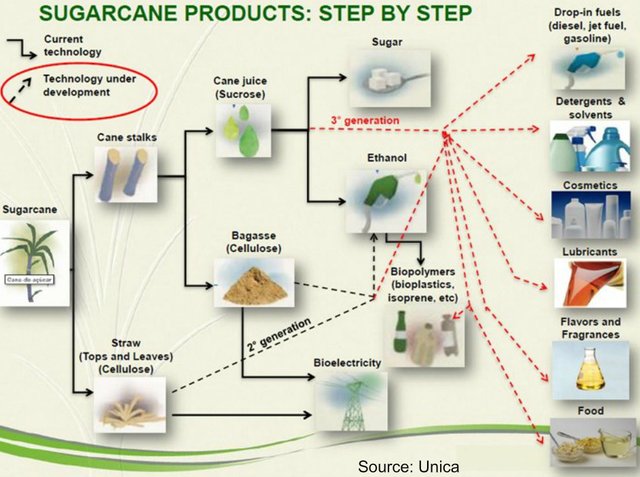
Sugarcane
- Water (73-76%)
- Soluble solids (10-16%)
- Dry fiber or bagasse (11-16%)
Sugarcane goes through various physical and chemical processes to yield Sugar & Ethanol.
Generally, from the sugarcane, the juice is extracted followed by extraction of sucrose from the juice. Then the juice is clarified by heating it up to 115°C & treated with lime and sulfuric acid to precipitate unwanted organic substances. The clarification of juice prevents juice inversion.
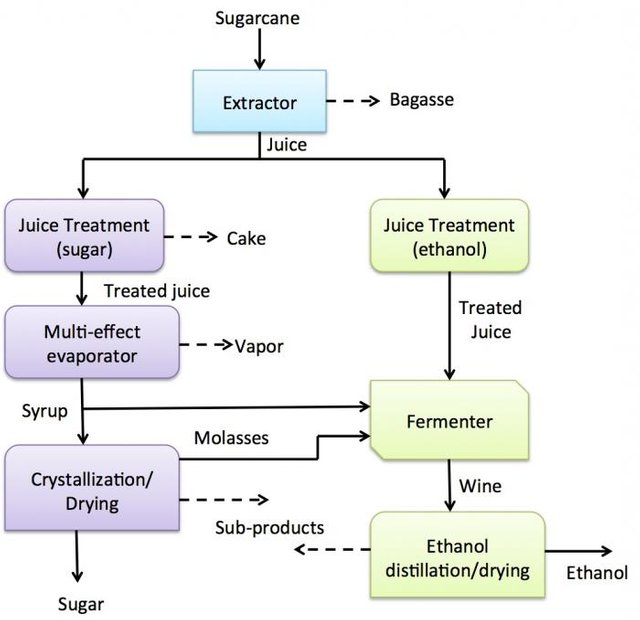
Ethanol is produced by fermentation where the juice and molasses are blended to obtain 10 to 20% of sucrose solution. As the entire process is exothermic in nature, a lot of heat is produced, therefore cooling is needed to make it conducive for fermentation.
From Sugarcane, major commodities like sugar and ethanol can be produced. At the same time, the dry-fiber(bagasse) can be utilized for power generation as the same can be combusted instead of coal. The carbon footprint of coal extraction and its use in the thermal power plant is much more than the carbon footprint of bagasse. So the bagasse which is generally considered as waste in the process of Sugar & Ethanol production has tremendous potential to combat Global Warming if the bagasse will be used in power generation as an alternative to coal.
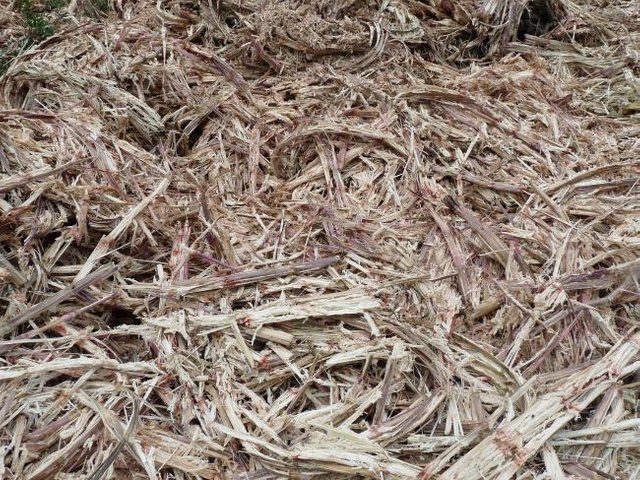
NB-The dry fiber residue that is left after extraction of juice from the sugarcane is known as bagasse.
So it is apparent that the Energy sector has a new alternative in the form of "bagasse" which is a by-product of Sugarcane and can be very effective in combating global warming.
While "Ethanol" can be derived from other agricultural crops like "corn", "beet", "wheat", "sugarcane" etc, Sugarcane based Ethanol is five times better than its counterparts, in the context of "energy balance". In other words, if we will use sugarcane based ethanol then the net emission will be less.
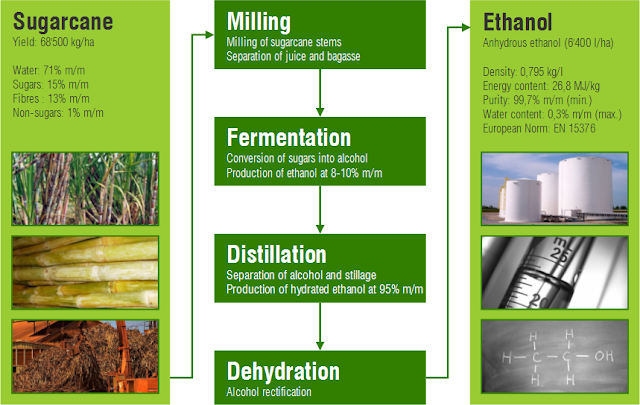
In Ethanol powered engines the organic compounds are mostly ethanol(70%) and aldehydes 10% (85% aldehyde and 14% formaldehyde). Gasoline engine emits a whole family of volatile compounds and polycyclic aromatic hydrocarbons with highly toxic and carcinogenic potential. Therefore it is important to analyze the formation of secondary pollutants, especially ozone and other compounds of photochemical oxidants family formed by the interaction of primary pollutants with solar radiation.
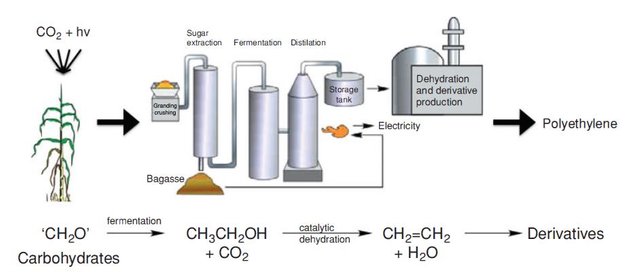
The consequence of fuel as Ethanol is aldehydes in the atmosphere, whereas the consequence of fuel as diesel is formaldehyde in the atmosphere.
The advantage of using Ethanol as fuel is that emissions are less than diesel-based vehicles and formaldehyde emission is replaced by acetaldehyde.
If gasoline will be replaced by Ethanol, then it would reduce direct vehicular emissions of precursor gases. The photo-chemical reactions of precursor gases form ozone. So Ethanol can potentially reduce the Ozone concentrations.
Why Ethanol as fuel is better than Petroleum derivatives?
- The oxygen content is high in Ethanol as much as 35% by mass, so the calorific value is also high as compared to Petroleum derivatives.
- The latent heat of Vapourization for Ethanol is 3.2% of its calorific value whereas for petroleum derivatives it is 0.7%.
- Ethanol has considerable volatility and high resistance to spontaneous ignition.
So Ethanol can be a better alternative as fuel not just by its calorific value but also by its net emission. The vehicular emission in automobile sector can be greatly reduced by leveraging on Ethanol as a fuel.
India as a country should focus on the use of Ethanol derived from Sugarcane, because India is the second-largest producer of Sugarcane in the world.
In the pre-industrial era, there was winter and summer vacation. In the post-industrial era, climate change has introduced a pollution holiday. Yes, it has already happened in New Delhi, the capital of India. The capital has already witnessed officially declared pollution holidays in schools and colleges.
The air quality index in the capital of India is reported to be measured above 400 micrograms per cubic meter most of the time. The "severe" level is between 400 and 500.
It could happen in some other city also. Not just India, this kind of suffocation due to pollution may spread across the globe if we do not switch to clean and renewable energy resources. If we don't act today, it could be a compulsion tomorrow.
Brazil is the world leader in the use of sugarcane-based Ethanol as fuel in the automobile sector. Almost all the light vehicles of Brazil are based on flex-fuel technology. Flex-fuel technology runs on any proportion of Ethanol and gasoline. Brazil has also made a lot of R&D in Ethanol powered engines. Now the heavy-duty vehicles can also be powered with ethanol-based engines. The Brazilian subsidiary of Swedish truck and bus maker SCANIA is the only automotive manufacturer to develop heavy vehicles equipped with engine powered by Ethanol.

The dry-fiber residue known as bagasse which is a by-product in sugar and ethanol production was earlier considered as waste but now it can further be utilized as a substitute to coal in power generation. So bio-electricity can be generated with the use of bagasse but the most important point is that it is carbon neutral.
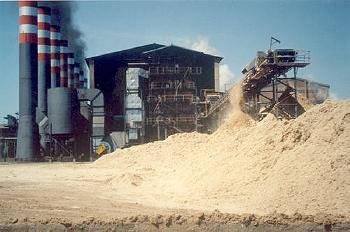
How Sugarcane based electricity is carbon neutral?
The Sugarcane plant from sowing to harvesting absorbs CO2, whereas, during the production bio-electricity by combusting bagasse, CO2 is emitted. So the emission is counter-balanced by absorption during plant growth. Therefore it is carbon neutral.
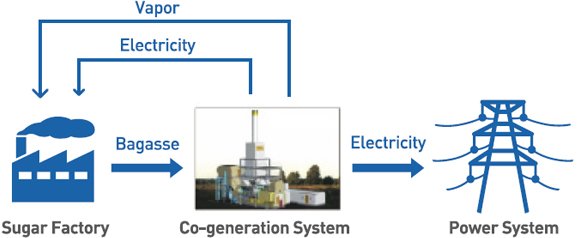
Brazil is also the leader in sugarcane-based bio-electricity. Bagasse based bio-electricity accounts for 3% of electricity use in Brazil.
Conclusion
The energy matrix can be re-organized with the use of Ethanol powered engines in the automobile sector and by generating bio-electricity with the use of Bagasse. If the sugarcane-based energy will contribute to the matrix then it will help to combat global warming and climate change. It will balance both economic growth and climate change.

The biofuels are the future fuels and are sustainable too. The developed countries must lead this front of clean and renewable energy resources. There are many options available. But what I am trying to say is that we should also optimize the locally available resources which are carbon neutral(e.g. sugarcane) and simultaneously subsidize the clean energy sector as well as encourage the R&D sector on a global platform and help the developed and under-developed countries.
Brazil is the leader on sugarcane derivatives and has developed technologies to use Ethanol on both light vehicles and heavy-duty vehicles. Brazil is also phenomenal in sugarcane-based bio-electricity. If the countries in South East Asia and other countries who are the top producers of Sugarcane will subsidize the sugarcane industry and encourage this sector at the policy level, enhance the R&D of sugarcane derivatives, then the automobile sector can be made carbon neutral.
Thank you.
References
- https://climate.nasa.gov/causes/
- http://english.unica.com.br/news/list/
- http://plasticoverde.braskem.com.br/site.aspx/Etanol
- https://en.wikipedia.org/wiki/Bagasse
- https://www.powershow.com/view4/493c06-Y2QzY/Biofuels_as_a_business_powerpoint_ppt_presentation
- https://en.wikipedia.org/wiki/Global_warming
Your entry is very good.
Thank you, but I don't think I will qualify.
@sacrosanctI, if you have posted this on other social media, could you put the link in the comments, please. Cheers
Yes I have already shared it in Twitter.
https://twitter.com/Debz1983/status/1225448774941597696